About Cheshire Archives and Local Studies:
Cheshire Archives & Local Studies is where Cheshire’s history lives. We identify, collect and care for archives and publications that are the evidence of Cheshire communities’ lives past and present. We deliver access for all to our collections for information, learning and enjoyment and work to make sure archives survive so that future generations will be able to do the same.
About the Parkside Asylum project:
Parkside Asylum opened in Macclesfield in 1870 and was Cheshire’s second county asylum, originally for the accommodation of “pauper lunatics” who were unable to pay for their own treatment. The asylum housed people with conditions such as epilepsy, keeping them out of workhouses and in a safer environment.
The hospital was later expanded to take on private patients, housing over 1500 patients. It was renamed the County Mental Hospital in the 1920s, and later the Parkside Hospital which closed in 1997.
We are fortunate enough to hold a range of original patient records from Parkside Asylum at Cheshire Archives and Local Studies, including the incredibly detailed case books. Information found within the case books includes biographical data such as the patient’s name, age, gender and marital status, as well as detailed descriptions of their mental state and behaviour. Some of the entries even include photographs, which can be invaluable to family historians.
Several of the case books have been digitised thanks to a bequest intended to support research in Cheshire archives and are available to view on our online catalogue. We want to use these digital images to help researchers learn more about the history of mental illness and its treatment in the 19th century.
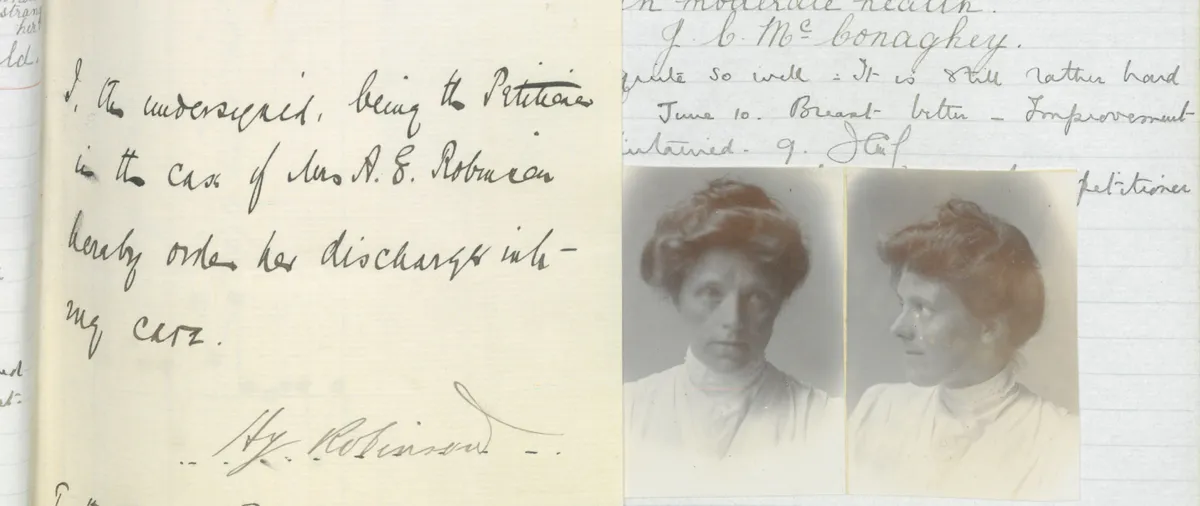
Using the citizen science web portal Zooniverse, our team of remote volunteers have been extracting the key information from the digitised case notes of patients admitted to the asylum in the late 1800s. The aim is to create datasets that can be searched and analysed by the public and researchers alike.
This new information will also be used in a future project which will concentrate on how women’s mental health has been framed and addressed locally over time. Project participants will include young women who have experienced mental health difficulties. They will explore the asylum records and learn more about the women treated there to better understand their shared experiences and differences.
We are now more than halfway through the first stage of our Parkside Asylum transcription project. Could you help us to complete our first dataset? Read on to find out how!
How to take part in the Parkside Asylum project:
Please note that due to the nature of the records involved, you may find some of these documents upsetting. Historical records reflect the period in which they were created. The patient case notes show how much the approach to mental health treatment has changed since these records were first created. The terminology used to describe mental illness has also changed, with many of the terms used in the records now considered offensive.
Step 1
Visit the project website and click on 'Get started'. You are not required to create an account to volunteer, but if you want to keep track of the number of contributions you have made then you will need to create an account. It's free, and all you need is an email address.
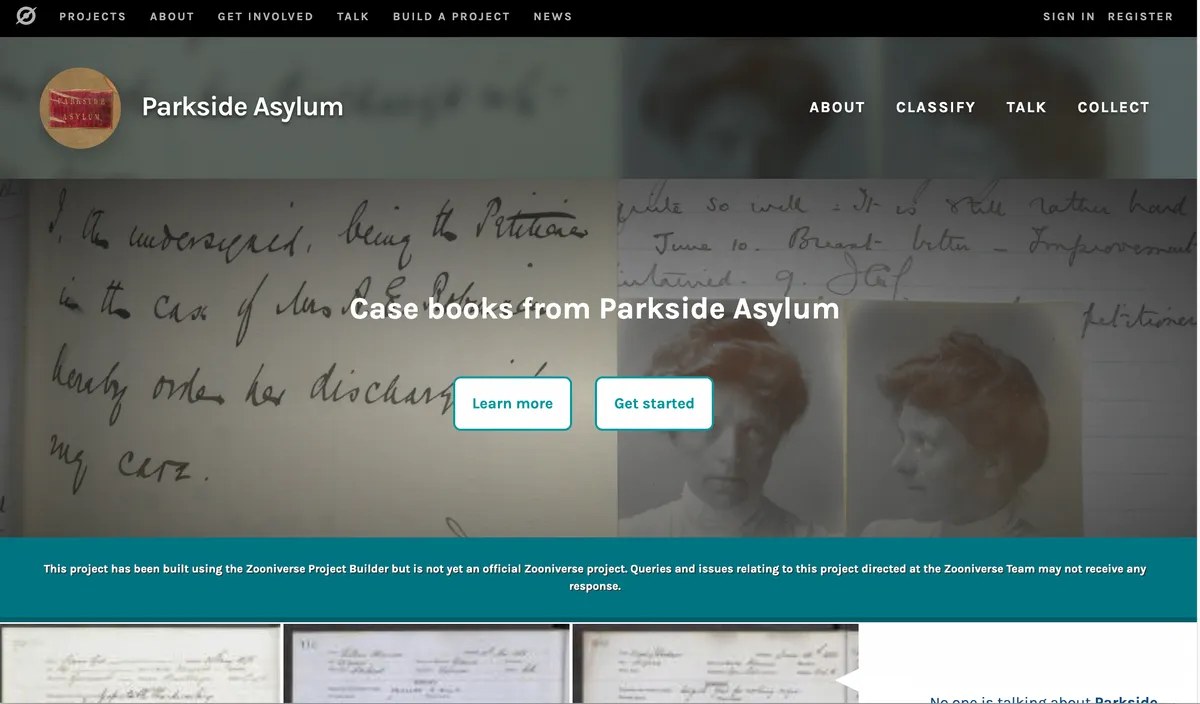
Step 2
You will be shown a page with an image of one of the records on the left and a form asking if the page contains the information of two or more patients, or just the one, on the right. Select the 'Tutorial' tab for a helpful guide providing more detailed instructions on how to complete the tasks. You can also click on 'Need some help with this task?' which gives more information about what is required at each stage.

Step 3
You will be asked to enter the page number in the box provided. When you have finished, click on the yellow button that says 'Next'.

Step 4
You will be asked to enter the person's name.
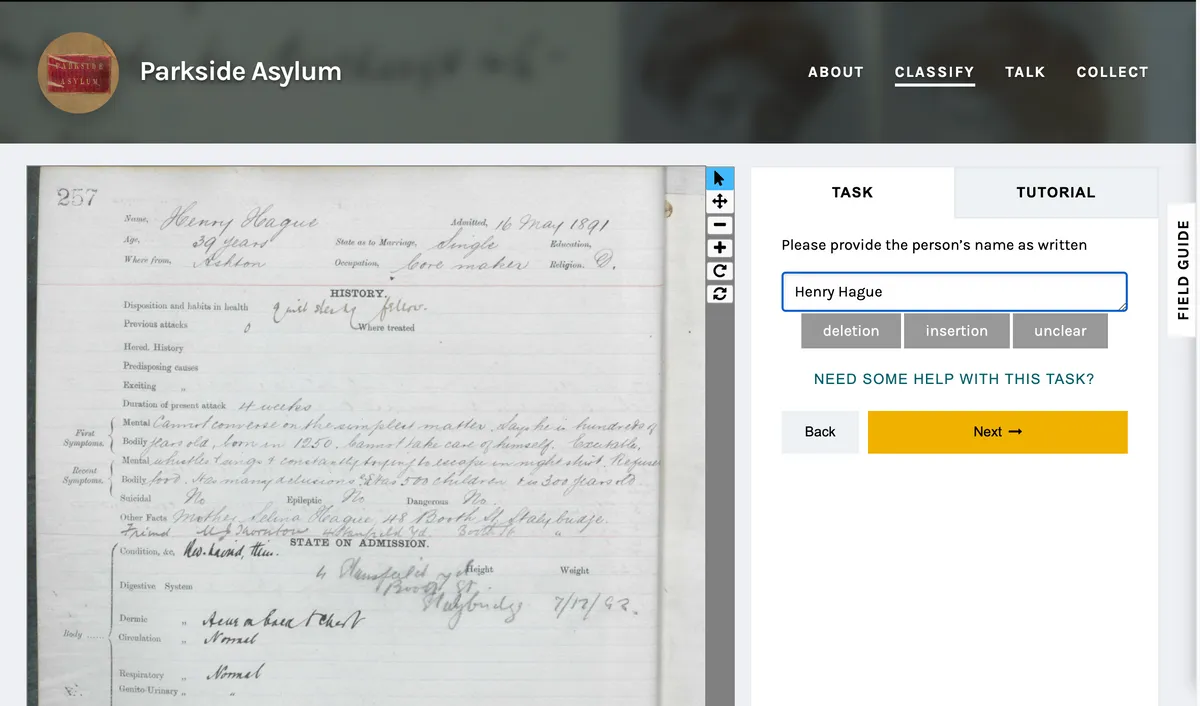
Step 5
You will be asked whether this is a male or female name.
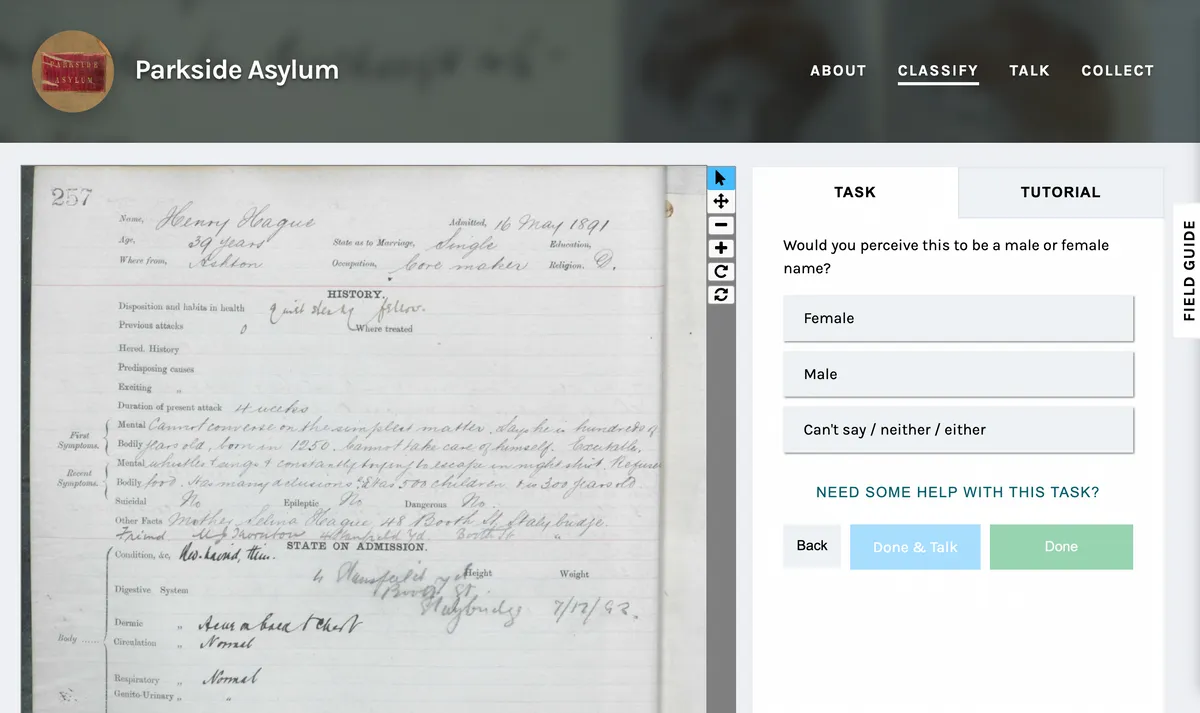
Step 6
You will be asked to fill in other details on the page, such as age, where from, and occupation. Note that you can use the 'unclear' button if you can't read the writing.
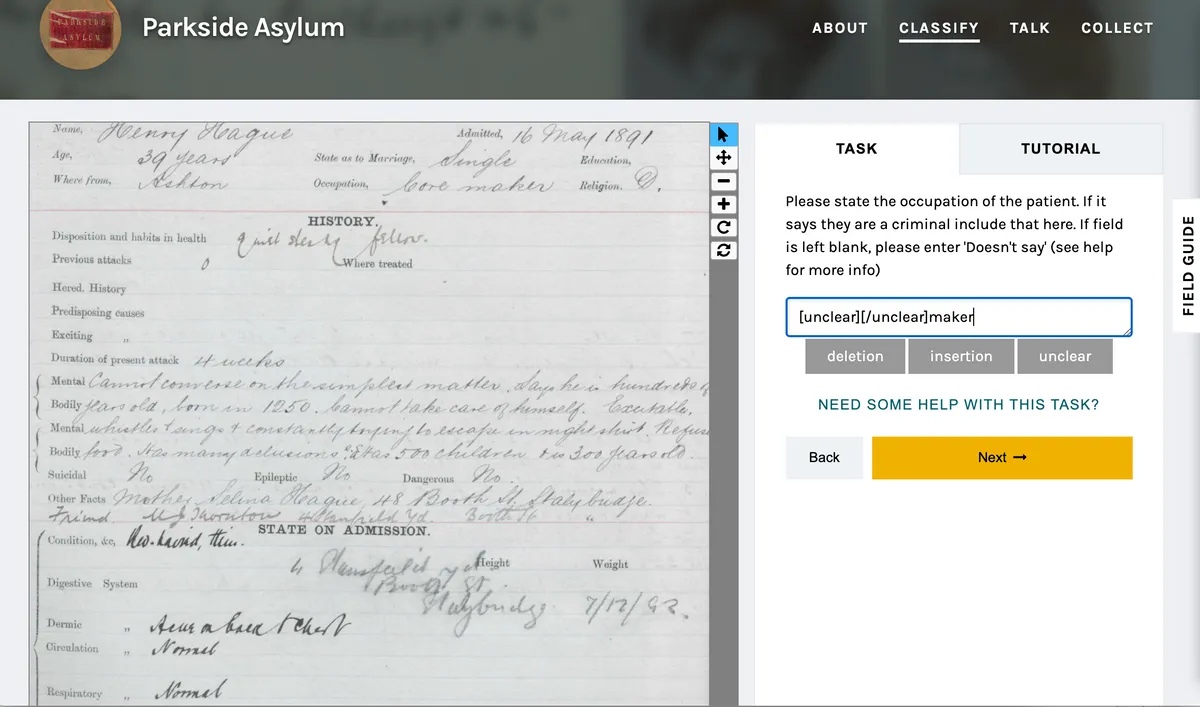
Step 7
If a field is left blank, you can enter 'Doesn't say'.
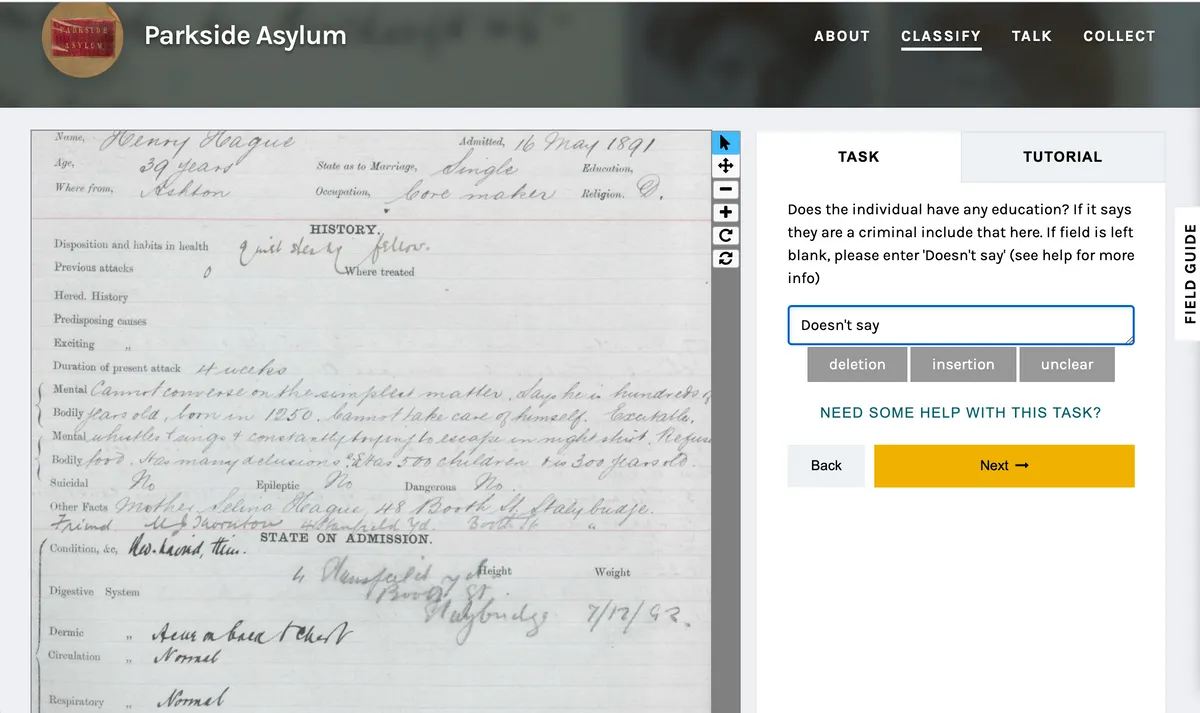
Step 8
Note that when you have to transcribe the 'Other Facts' box, you will need to enter in full any names and addresses given for the patient's family or friends.

Step 9
Now you need to read the patient's notes and decide whether the doctor has described them in any of the ways listed (Sullen, Nervous, Irritable etc). Please note that this may be challenging because it requires you to read a long block of text in old-fashioned handwriting. You can select as many or none as applicable. Then select 'Next'.

Step 10
The next step asks you to select words that reflect how the patient's speech has been described. Again, pick all the words that apply. After this, there are a number of similar screens each asking questions about things such as delusions, guilt or relationships with alcohol. Answer them to the best of your ability. If you are uncertain you can select nothing and move on to the next screen. For the question about alcohol, you may find the answer towards the top of the page next to 'Predisposing causes'.
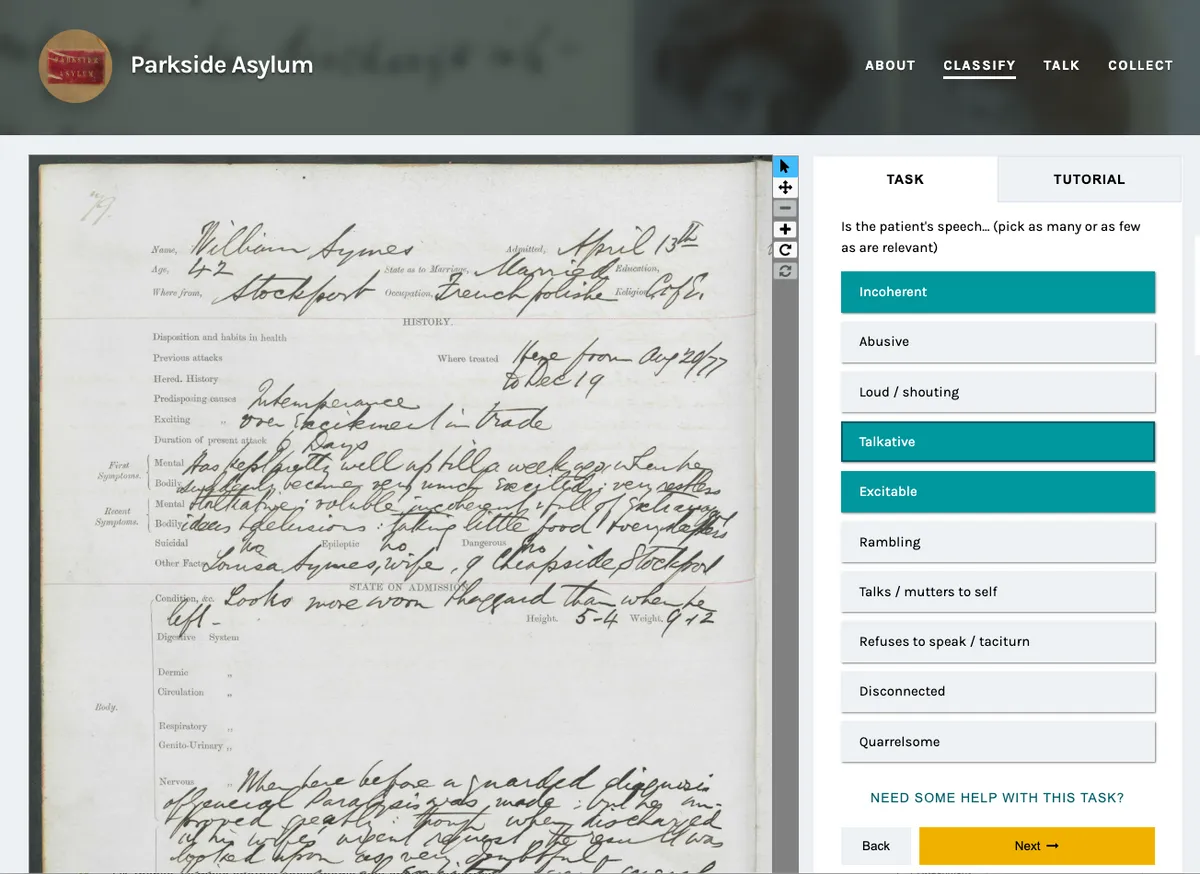
Step 11
The final questions ask about the diagnosis and the condition of the patient. These should be clearly stated in separate entries on the form. The final question you will be asked is if there is a final diagnosis for the patient (usually written in red ink). If none, then just type 'Doesn't say'. Once you have finished, click the green box that says 'Done' and you can try your hand at another entry!
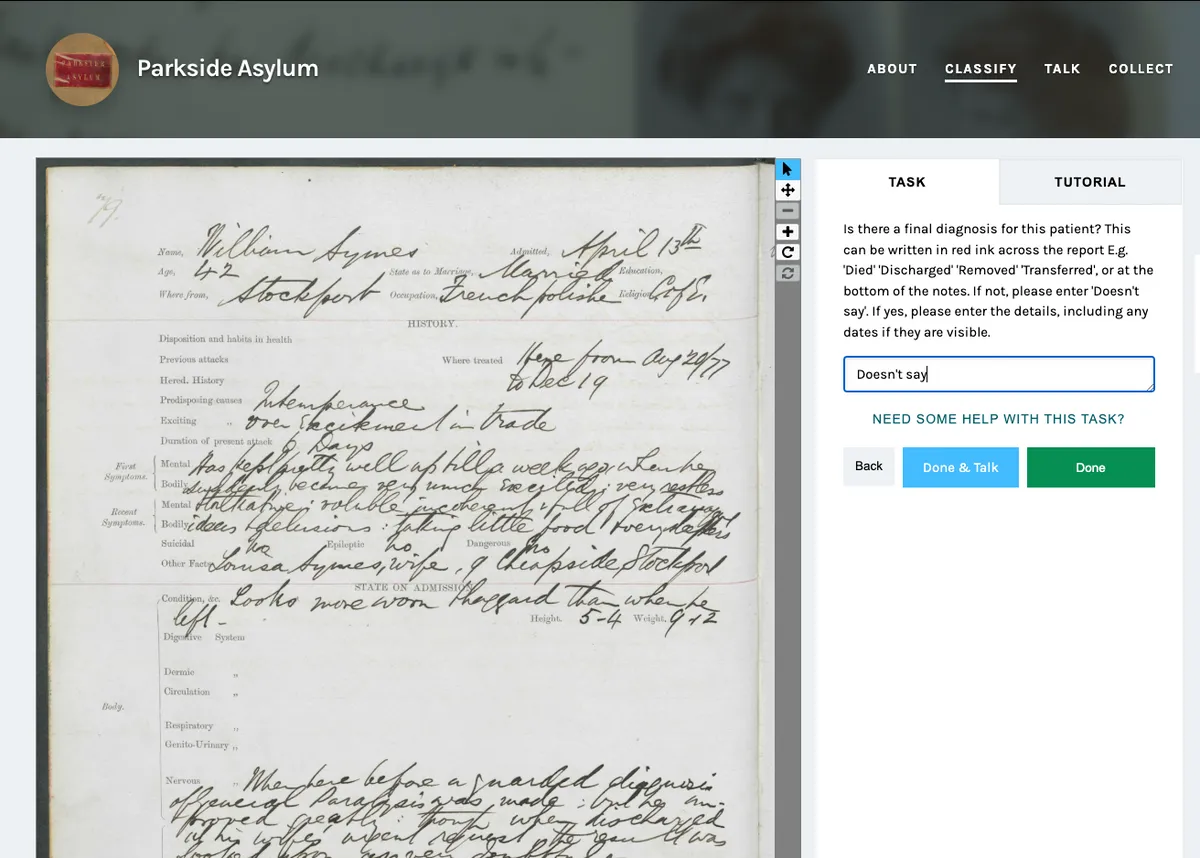
Contact on the day
If you have any problems on the day, please email recordoffice@cheshiresharedservices.gov.uk. We are grateful for any help you are able to give in making these important records more accessible. Thank you – and best of luck!